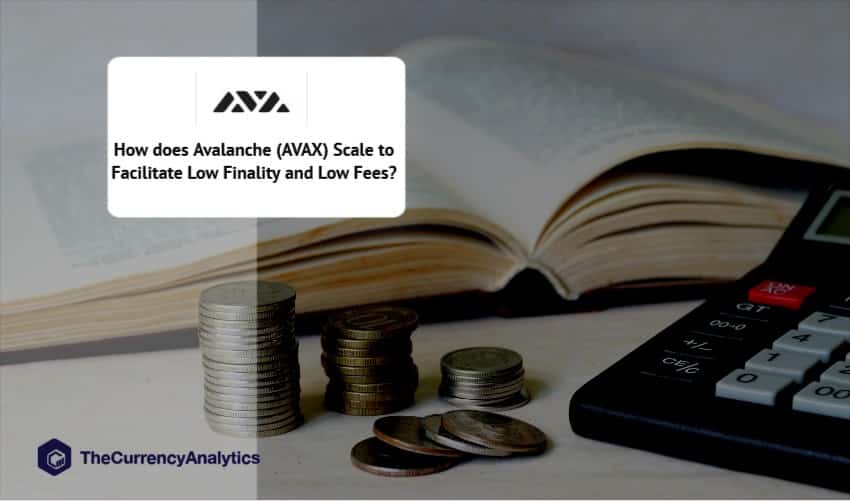
How does Avalanche scale i.e., support high demand, low finality, and low fees? 1. Avalanche consensus enables to scale vertically. 2. Subnets enables to scale horizontally. It’s just a matter of time until everything gets deployed.
Twitter Handle Kevin Sekniqi: Fees are high, can devs do something?
First of all: absolutely. Anyone that has followed Ava Labs’ engineers knows they are stone cold killers. But we’re not here to discuss whether it will get delivered quickly (it will). We’re here to discuss the “how” in an *intellectual honest way*.
A blockchain is a special kind of database in that anyone should be able to replicate and update. However, ultimately, it *is* a database. That means that like all databases it has a finite amount of operations that it can support every second.
As the limit to the operations is slowly reached, fees start ramping up. This is true for every single blockchain, whether it’s Bitcoin, Ethereum, Avalanche, Solana, Eth2, Cosmos, you name it. If it is permissionless, then capacity is eventually reached, and thus fees go up.
Like taxes and death, fees and capacity limits to a database are inescapable truths IF the blockchain is truly permissionless and decentralized. Ok, so back to the period of high fees yesterday: does that mean that we reached Avalanche’s limits?
The answer is *not even remotely close*. Not on the c-chain and (of course) not on the horizontal scalability of subnets. Let’s decompose what this means, starting with the c-chain.
The c-chain is currently parametrized to two extremely limiting factors: A) 10M gas every 10 seconds. This is how much compute and storage the network allows the c-chain to grow every 10 seconds B) A *very* aggressive fee increase in those 10 seconds.
The first limiting factor tells Avalanche consensus how fast it should allow blocks to generate transactions. For some info on how limited it has been set: Ethereum is 15M gas every 12 seconds. It’s even lower than Ethereum mainnet!
The second limiting factor tells Avalanche consensus how fast it should ratchet up fees. This is important to prevent a sudden spur of blocks over a short period of time (for example, you can generate hundreds of blocks over 1 second) and thus spamming the networking layer.
Both of these limiting factors are there for one reason only: storage. This is because when EVM was ported as a module inside AvalancheGo, it wasn’t optimized. For example, all DB operations run over gRPC, which is crazy! All fixable, there’s just been no time to do it yet.
So, over the next weeks and months, engineering is prioritizing all these optimizations right away. With superpruning (effectively ability to drop off old state), fast sync, and many low-level coreETH optimizations (the wrapper around EVM), both limiting factors will vanish.
So, the c-chain alone should be able to scale to hundreds, if not thousands, of transactions per second while: A) Keeping fees as competitively low as possible B) Maintaining decentralization (i.e. modest machines can be full validators).
C-chain can continue to ingest thousands of TPS, but it will likely *not* be able to offer the lowest fees in town. However, the beautiful thing is that it will perpetually keep getting better. As more and more optimizations come through, 1K TPS will get cheaper & cheaper.
However, there’s a limit. It is likely that demand will still outpace blockspace supply. So there will *very likely* be scenarios where fees will spike up temporarily to very high levels. At this point, there’s only way way to future proof this: subnets.
Subnets are generic L1/L2 toolkits. I like to think of them as L(1/2)-as-a-Service. Every single dApp on the C-chain can run in its own subnet. There, the developers can choose to keep the state independent (ala L1) or can choose to borrow security (ala L2 rollup/zkSnark).
There’s many subnets currently under way. Nothing deployed yet, but as the tooling and example subnets get released, people will find it easier and easier to just deploy L1s/L2s on the go on Avalanche network.
Thus, it gets clarified that Avalanche scales.
Get the latest Crypto & Blockchain News in your inbox.